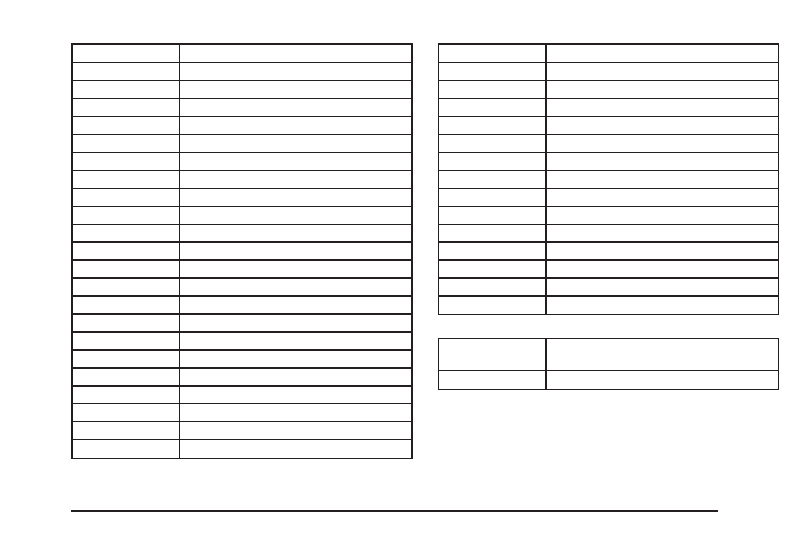Pontiac Bonneville (2005 year). Manual - part 24

Fuses
Usage
12
Fog Lamps
13
Transaxle
14
Cruise Control
15
Coil Module
16
Injector Bank #2
17
Not Used
18
Not Used
19
Powertrain Control Module Ignition
20
Oxygen Sensor
21
Injector Bank #1
22
Cigar Lighter #2
23
Cigar Lighter #1
24
Daytime Running Lamps
25
Horn
26
Air Conditioner Clutch
42
Not Used
43
Not Used
44
Anti-Lock Brake System
45
Air Pump
46
Cooling Fan 1
47
Cooling Fan 2
54
Spare
Relays
Usage
27
Headlamp High Beam
28
Headlamp Low Beam
29
Fog Lamps
30
Daytime Running Lamps
31
Horn
32
Air Conditioner Clutch
33
Air Control Valve
34
Spare
35
Accessory
36
Starter 1
37
Cooling Fan 1
38
Ignition 1
39
Cooling Fan Series/Parallel
40
Cooling Fan 2
Circuit
Breakers
Usage
41
Starter
The spare fuses are located in numbers 48 through 52.
The fuse puller is located in number 53.
5-115